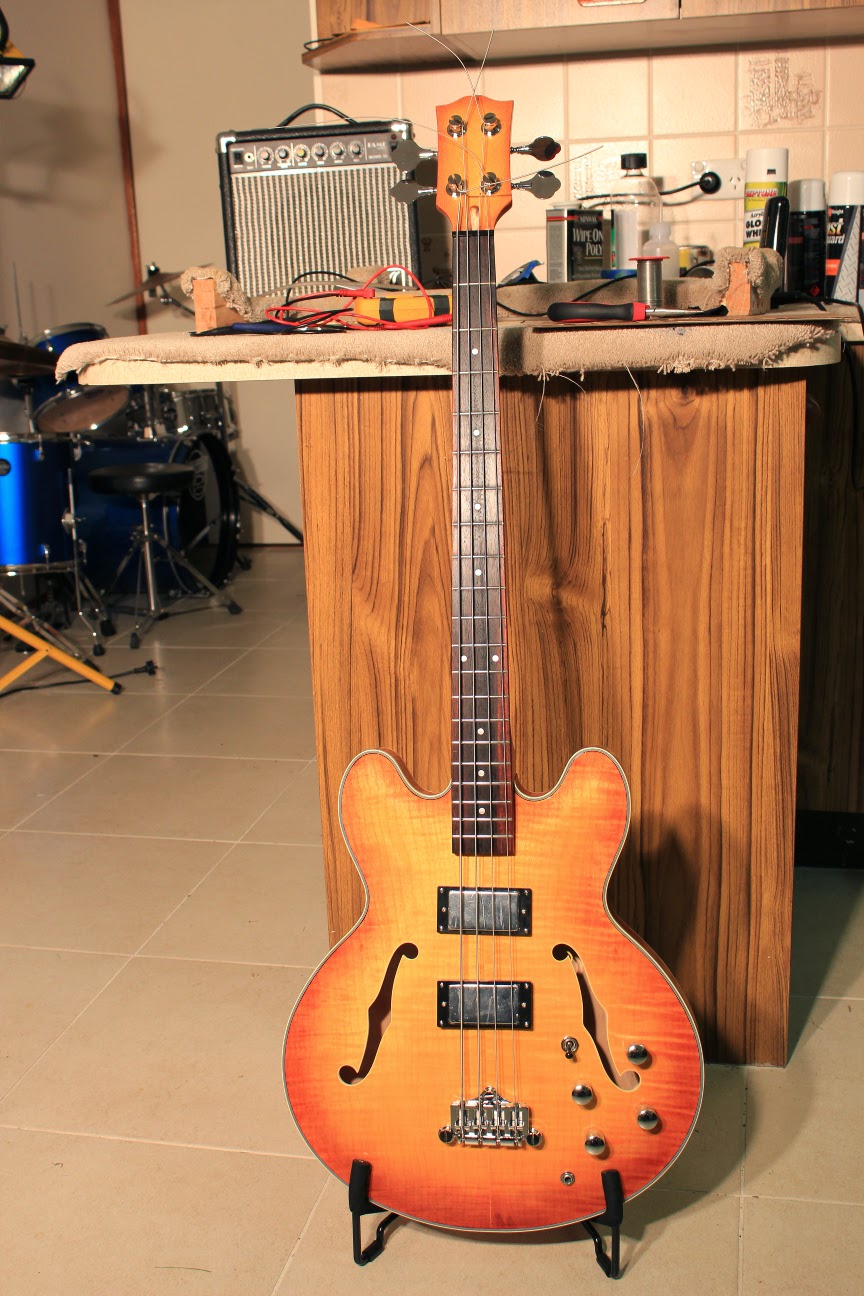While I wait patiently for my router bits and cavity templates from Stewmac, I though I'd have a go at transferring the pickguard from the pdf design to a thin MDF sheet ready for shaping the pickguard material. It was pretty straightforward; involving pretty much the same procedure as with the body template.
First I cut out the pdf on to A4 paper and stuck it together with sticky tape. Using the neck template and the bridge positioning distances calculated from the Stewmac fret position calculator, I oriented this paper template between the neck cutout and the bridge. This gave me the first hurdle to overcome - the hard-tail bridge that I've selected for this build sits further back than the stock Toronado bridge referenced in the design. This meant that the pickguard design needed some freehand alteration to move the bridge surround lower, and to shift the side edges out and down to meet this new surround placement.
With the alteration made, the second step was to glue the paper template onto the 4mm MDF and cut roughly around it with the band-saw. This done, the bench sander allowed me to smooth off the majority of the convex and concave curves. The tight corners around the bridge and in the neck cavity proved the most fiddly, requiring a fine curved file to slowly remove material until the desired shape was reached.
Finally, the job was done and the pickguard template looks pretty good:
I'll have to wait for my templates from Stewmac before I can add the pickup routes in the pickguard. This will provide it's own set of challenges, but I'm ready and raring to go!
First I cut out the pdf on to A4 paper and stuck it together with sticky tape. Using the neck template and the bridge positioning distances calculated from the Stewmac fret position calculator, I oriented this paper template between the neck cutout and the bridge. This gave me the first hurdle to overcome - the hard-tail bridge that I've selected for this build sits further back than the stock Toronado bridge referenced in the design. This meant that the pickguard design needed some freehand alteration to move the bridge surround lower, and to shift the side edges out and down to meet this new surround placement.
With the alteration made, the second step was to glue the paper template onto the 4mm MDF and cut roughly around it with the band-saw. This done, the bench sander allowed me to smooth off the majority of the convex and concave curves. The tight corners around the bridge and in the neck cavity proved the most fiddly, requiring a fine curved file to slowly remove material until the desired shape was reached.
Finally, the job was done and the pickguard template looks pretty good:
I'll have to wait for my templates from Stewmac before I can add the pickup routes in the pickguard. This will provide it's own set of challenges, but I'm ready and raring to go!



















































